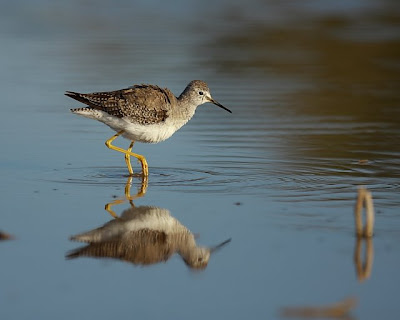A striking black-and-white bird with very long, thin red legs, the Black-necked Stilt is found along the edges of shallow water in open country.(read more)





Apr28,2009
Photography, Conservation, Exploration



















Contributed by Darrell Land, Panther Team Leader, Florida Fish and Wildlife Conservation Commission
Originally published 2:57 p.m., Thursday, April 9, 2009
Updated 2:57 p.m., Thursday, April 9, 2009
NAPLES — The Florida Fish and Wildlife Conservation Commission received calls this morning about a panther that was struck and killed at 10:20 a.m. on U.S. 41 near Turner River in Collier County. The panther, UCFP119, was a 2-3 year-old female that had a cowlick but did not have a kinked tail. No subcutaneous transponder chip was detected. The carcass is being transported to Gainesville today and a necropsy has been scheduled for Friday. The remains will be deposited with the Florida Museum of Natural History. This is the sixth known panther mortality for 2009, five of which have been caused by collisions with vehicles.
The following is a statement from Laurie Macdonald, Florida program director for Defenders of Wildlife:
“Today’s tragic incident is deeply upsetting because it could have been avoided if there had been wildlife crossings and fencing in the area. The panther killed today was a breeding age female panther - a critically important individual in the very small wild panther population – and she was killed along a road segment where a wildlife crossing has been proposed.
“We hope that today’s event once again underscored the pressing need to move quickly ahead with reducing the threats caused to panthers crossing the road in Big Cypress. We are urging Florida Department of Transportation and Collier County to slow traffic down on US-41 with speed-calming structures, such as speed bumps and rumble strips, warning lights, a lower legal speed limit and increased enforcement.
“Defenders of Wildlife has been working with agency partners for over a year on a conceptual design for two wildlife underpasses and fencing that would reconnect panther habitat and allow for safe passage of panthers and other wildlife. A public meeting to review the speed-calming and crossing designs will be held in late spring or early summer.
“Once improved measures are in place, we hope that incidents such as these will become less frequent, and panther population will have a real shot at reproducing to sustainable population levels.”
Since this is my first blog post, I’ll try to make it count.
For years I’ve been trying to save things, from endangered species to treasures placed along the curb on trash night. The January issue of National Geographic illustrates the former, the CBS Sunday Morning Show the latter.
To me it’s a real shame when we don’t think before we act. What we do has real consequences, sometimes forever. It’s my job to point that out.
All of us can play a role in the future of our planet. Start at home. Turn down the lights and the heat just a bit. Drive a smaller car. Reduce what you buy. Reuse what you buy. Certainly recycle, but think of that as a last resort. Know that every time you pay for something, you’re telling the world that you approve of how the product was made, what it’s made from and the fuel that was used to bring it to you.
Please, spend your money well.
Joel Sartore
Lincoln, Nebraska
January 28, 2009
